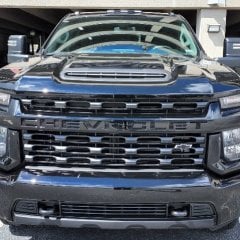- 0
Head Bolt Torque 2004 Avelanche 1500 5.3
-
Recently Browsing 0 members
- No registered users viewing this page.
-
Forum Statistics
246k
Total Topics2.6m
Total Posts -
Member Statistics
-
Who's Online 6 Members, 1 Anonymous, 983 Guests (See full list)
















Question
jdeeg4276
10.1Tighten the first design M11 cylinder head bolts a first pass in sequence to 30 Nm (22 lb ft).
step #1-I understand this Duh 22 foot lbs torque 10.2Tighten the first design M11 cylinder head bolts a second pass in sequence to 90 degrees using the J 45059.
step #2-This i dont have the tool but i know what a 90 degree turn looks like10.3Tighten the first design M11 cylinder head bolts (1,2,3,4,5,6,7,8) to 90 degrees and the M11 cylinder head bolts (9 and 10) to 50 degrees a final pass in sequence to using the J 45059.
ok so is what im reading is to tighten ( 1-8 ) 90 degrees a second time over the first 90 degrees, and over the already 22 ft lbs torque10.4Tighten the M8 cylinder head bolts (11,12,13,14,15) to 30 Nm (22 lb ft). Begin with the center bolt (11) and alternating side-to-side, work outward tightening all of the bolts.
11.1Tighten the second design M11 cylinder head bolts (1-10) a first pass in sequence to 30 Nm (22 lb ft). 11.2Tighten the second design M11 cylinder head bolts (1-10) a second pass in sequence to 90 degrees using the J 45059.11.3Tighten the second design M11 cylinder head bolts (1-10) a final pass in sequence to 70 degrees using the J 45059.11.4Tighten the M8 cylinder head bolts (11,12,13,14,15) to 30 Nm (22 lb ft). Begin with the center bolt (11) and alternating side-to-side, work outward tightening all of the bolts.Here is my first question in which head is design #1 or design #2?
Second question am i tightening bolts 1-10 90 degrees twice and then on the second pass im tightening 9 and 10 only 50 degrees more instead of the 90 degrees?
Link to comment
Share on other sites
0 answers to this question
Recommended Posts
Archived
This topic is now archived and is closed to further replies.